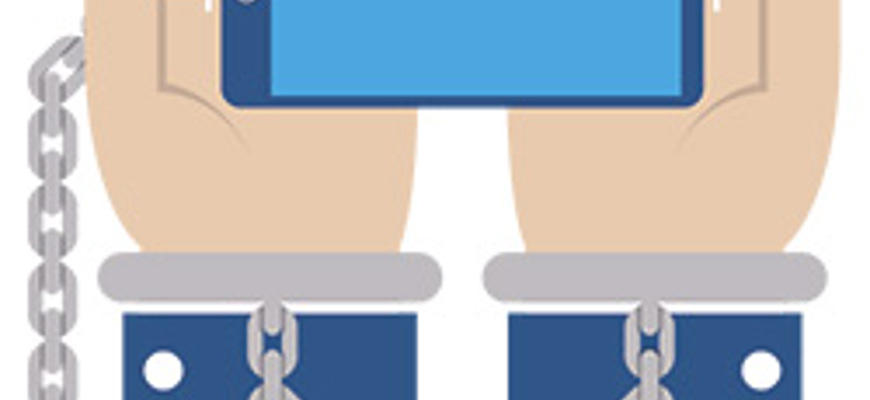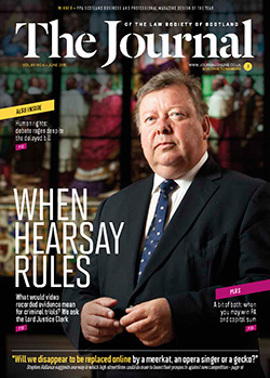Technology: slave or master?

The demands are familiar: a hefty workload, rising client expectations, a culture of long hours – and a commitment to “get the job done”. The latest Society research on working patterns within the professions highlights the pressures facing solicitors, while also exploring new ways of working.
The report, Perceptions and Impacts of Working Patterns within the Legal Profession in Scotland, was commissioned as an in-depth, qualitative follow-up to the 2013 Profile of the Profession study, the biggest survey of its kind carried out by the Society.
Neil Stevenson, the Society’s director of representation and professional support, explains that both research projects identified similar overall trends in the way solicitors work. However, the latest study also offers a fascinating, and valuable, snapshot of the day-to-day experiences of individual solicitors working in different sectors, around the country.
“One of the areas the research focused on was the impact of technology on working patterns,” he says. “And while the advantages were recognised – using videoconferencing to take part in meetings, accessing files remotely and catching up on emails during the train journey home, for instance – concerns were also raised about the intrusive aspects of technology.
“We wanted to test whether technology was helping create a more level playing field for those working flexibly or on reduced hours, or whether it was helping the ‘alphas’ in the profession, whether male or female, work even longer hours. It appears that advances in technology are widening rather than reducing the gap between those prepared to work additional hours and others who would rather not.”
Upside and downside
Respondents to the research – which included those working full time, part time, condensed hours and from home – believed technology had contributed to increased workloads and a culture of long hours, while also intruding on their work-life balance. The report found that a “culture of extensive overtime has become endemic across the profession”.
It goes on: “Technology was seen to contribute to this increased workload. In particular, smartphone devices with push technology activated were seen as a significant driver of additional hours and a reduction in an acceptable work-life balance. Solicitors reported persistently receiving emails outwith office hours, along with an expectation, both by clients and their firm or organisation, that they will respond instantly. Feelings of not being able to switch off and being permanently tied to the office were commonplace… While there were advantages discussed in relation to the impact of technology, most individuals of all grades and working patterns highlighted the challenges and negative impacts this had brought to the profession.”
However, the report added that technology also created efficiencies and accommodated greater flexible working patterns, which encouraged staff retention and a more motivated and productive workforce. One area highlighted by the research was the potential advantages technology could provide for men keen to work flexibly to allow them to take a more hands-on approach to childcare.
The report found: “Increasingly, men desire an active role in the childcare responsibilities and want to be more ‘hands on’. Some also indicated that their wives have careers and in some cases earn the higher salary, therefore it makes more sense for their family situation that the man takes a part-time role to accommodate childcare. Even when part-time working is not required, men with young families appreciate the ability to get home in time to spend some time with their children and then, if required, start work again in the evening. New technology allows this flexibility.”
Always on call?
Other areas explored by the study included perceptions around working patterns, the gender-based pay gap, discrimination, and the Society and its services. Stevenson says the Society is particularly interested in the suggestions for new ways of working and examples of best practice. “It’s evident that the huge change in technology and access has not always been fully supported by training, support, and guidance on working practices.
“Feeling constantly on call is now a key cause of stress in the profession, and may not even be what clients or employers really intend. It is worth all employers regularly discussing how the most intrusive aspects of technology can be reduced. Many of the ideas in the report are worth exploring further and would not necessarily have significant cost implications.”
The research was based on group and telephone interviews with men and women (working part time, condensed, and full time), including partners, directors and managers with responsibility for teams and business interests.
In this issue
- Weighing the risks
- Private parking fines – are they enforceable?
- Scotland – home of (dangerous) golf
- Shareholder details: the right to refuse
- Perils of the owner-occupied croft (fuller version)
- Reading for pleasure
- Opinion: Thomas Ross
- Book reviews
- Profile
- President's column
- Land Register completion: one year in
- People on the move
- Rights: whose final say?
- The word on the street
- Screen test
- Making the best of mediation
- Keep up the payments
- The right priorities
- When reputation is not enough…
- Sports justice – being seen to be done?
- Source of disputes
- CML Handbook: the new deal
- Perils of the owner-occupied croft
- In-house and in-tune in the Commonwealth
- Stair Society seeks new blood
- New Build Standard Clauses revised
- Law reform roundup
- Leven's last hole rarely in benevolent mood
- Year of the new look
- AML just became simpler
- "My time is valuable!" Oh really?
- Learning opportunity
- Ask Ash
- Technology: slave or master?






